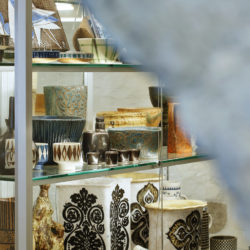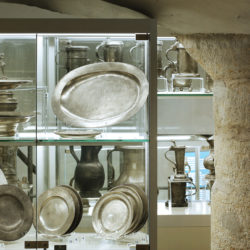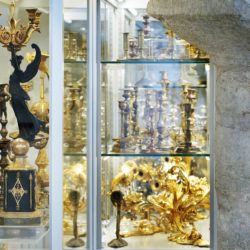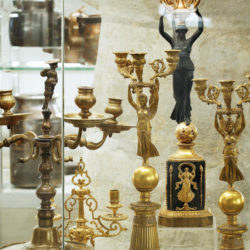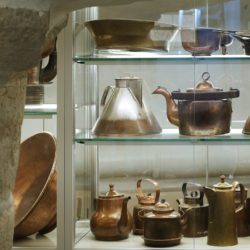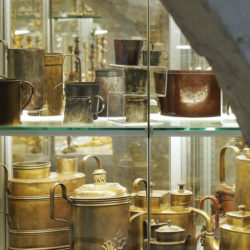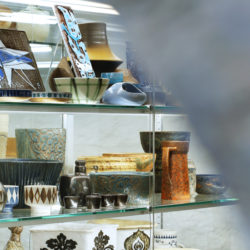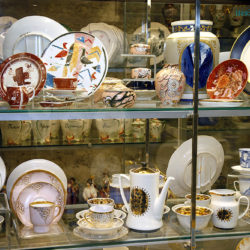Exhibition of
AMAZING TABLEWARE
Exhibition of ceramics, copper, bronze and tin in a medieval house
The museum’s open archive introduces Tallinn City Museum’s collections and cellar from the Middle Age.
In addition to the collections, the important architectural elements of the museum building that dates back to the Middle Age, are on display. There is an indoor well that used to supply the merchant house with water and which is rare to have survived to this day in such condition in the Old Town. In addition, the round pillars and the fireplace that was used to dry the air in the cellar that was used for storing salt can be seen. The archeological items dating back to the 14th-19th century that were found in the well have their own exhibition. The damp environment of the well has preserved the items well.
The ceramics open archive introduces the dishes that were set on the tables of the citizens of Tallinn, but also dishes that were made here. The main emphasis is on ceramics made or used in Tallinn from the 14th to the 20th century. Exhibited are the products of companies from the first Estonian Republic time, Art Fund’s ceramics atelier (later ARS) and the decorative and applied ceramics of factory “Ehituskeraamika Tehas” from the years 1950.-1990. There is a small collection of Estonian cottage ceramics from the period of the Republic and German stoneware from the 16th-20th centuries.
From the rarities, Carl Fick’s manufacture products from the 18th century have been displayed. Items from Nikolai Langebraun’s porcelain factory have their own showcase.
Most of the copper, brass and bronze collections are dishes from the 19th to the 20th century. There are also candlesticks and chandeliers, collection boxes, volumetric measures used in different centuries, samovars and copper utensils and souvenirs made by the Folk Art Masters’ Association “Uku” from the 1980s. A separate collection consists of bells, the oldest of which is the meeting clock of the Brotherhood of Blackheads from 1472.
The tin collection of the City Museum represents mainly the works of Tallinn’s tin masters, from the 16th to the 19th century. Nearly half of the collection is made up of Tallinn Town Hall and the Blackhead brotherhood’s tableware from the 18th century, the oldest items are jugs from the 15th century.
In addition to 17th to 20th-century jugs and goblets, there are 19th-century candlesticks, tableware and souvenirs.
INFO:
A visitor who is interested more in a topic or item in the museum can find thorough information in the booklets. There are overviews of different collections and history, different techniques and terms, and also signs and etiquettes. All of the information is available in Estonian, Russian and English.
- Products of a number of companies from the first Estonian Republic (AS Savi, Eesti I portselanitööstus, OÜ Kodukäsitöö ceramics atelier) time can be seen. From the rarities, products of Carl Fick’s manufacture from the 18th century have been displayed. Items from Nikolai Langebraun’s porcelain factory have their own showcase.
- A lot of the ARS ceramics have reached the museum as a product sample or have been given to the museum.
- Uku’s products have been bought as product samples.
- Copper and other material dishes, samovars, chandeliers and measures have been in use in the homes of Tallinn’s citizens.
- German stoneware and Roman oil lamps are from a private collector’s collection.
- From the rarities, the Town Hall’s chandelier from 1580-1650 and the Blackhead brotherhood’s meeting bell from the year 1472.
